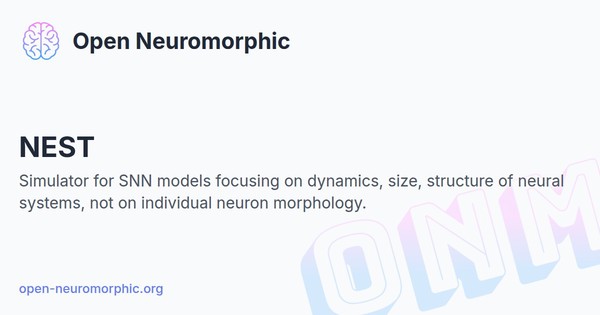Overview
NEST is a prominent open-source simulator for spiking neural network (SNN) models, mainly used in computational neuroscience. The project is developed and maintained by the NEST Initiative, which has advanced computational neuroscience by pushing the limits of large-scale simulations of SNNs. They heavily encourage and support community involvement through a robust community of developers who contribute to and maintain the simulator. Along with their passionate community, NEST provides extensive documentation on their simulator including a documented movie, an informational brochure, and tutorials.
The framework focuses on the dynamics, size and structure of neural networks rather than on the morphology of individual neurons, aiming to simulate the logic of electrophysiological experiments. NEST supports more than 50 neuron models and over 10 synapse models, allowing for customization through user-defined models. It excels in high-precision simulations of large networks, capable of handling millions and billions of synaptic connections. The user-friendly syntax enables efficient and convenient commands to define and connect large networks.
NEST is equipped with a Python interface for ease of use and integrates well with other neuroinformatics tools. It excels in efficient parallel computing, making it suitable for high-performance simulations and is both memory and energy-efficient. The library has many capabilities and applications that have been explored by researchers, practitioners, and newcomers to the computational neuroscience field.



